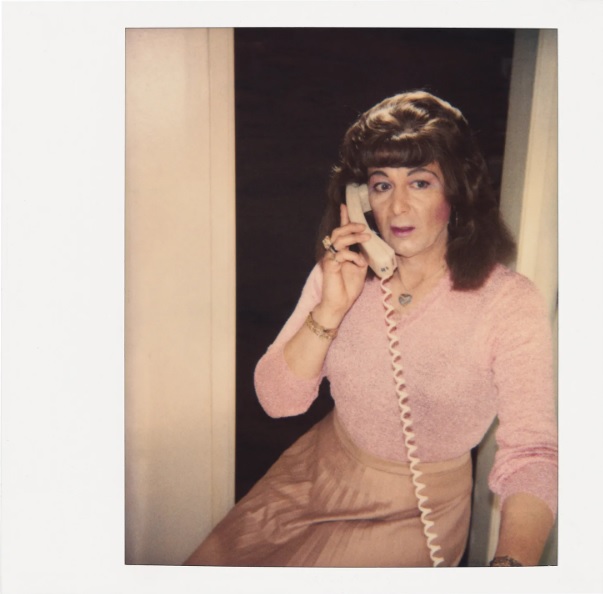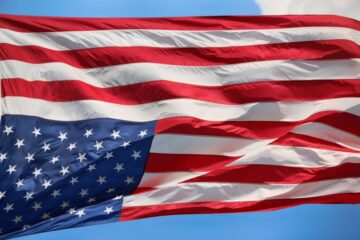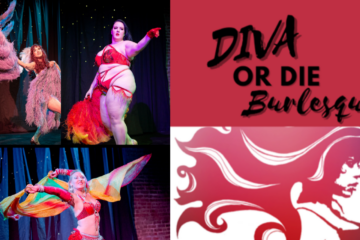What Is Queer Pain? Understanding April Dawn Alison
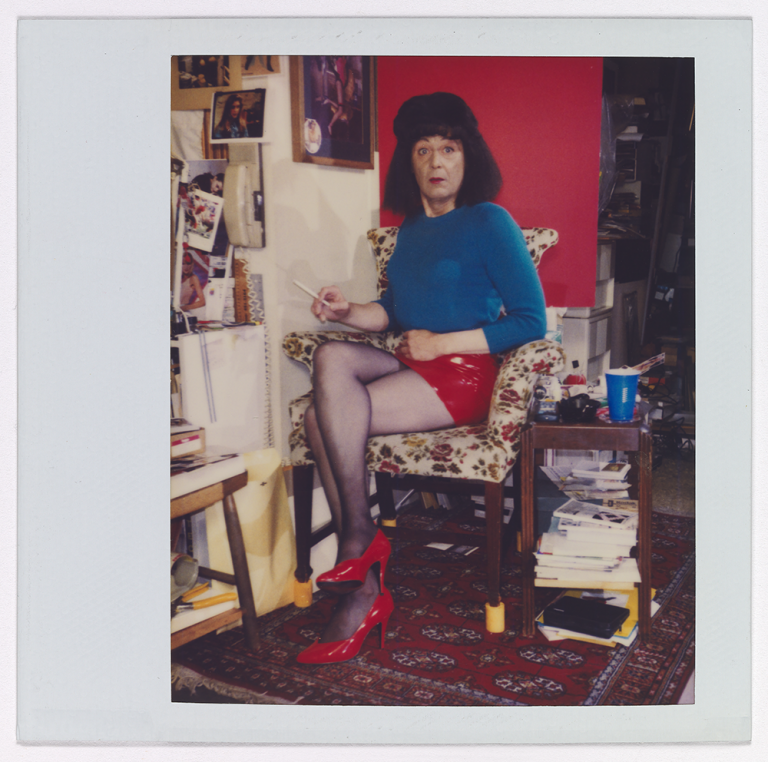
April Dawn Alison, Untitled, n.d.; collection SFMoMA, gift of Andrew Masullo.
Are we ready to take on queer pain?
Throughout the latter half of the twentieth century, Oakland artist and resident April Dawn Alison took a series of self-portraits on Polaroid film in voluminous cocoa wigs and rouge lips, in a PVC skirt and color-matched pumps, in bondage. The massive compilation reveals Alison in poses, some suggestive, others merely curious. My first impression was that of a drag queen, a performer capable of bending gender into unrecognizable shapes and metaphysical parodies, but for decades Alison’s only stage was their apartment, their audience a party of one. My question as a voyeur: how is the art (and to the point, the artist) asking to be seen?
In June 2019 soon after the series debut at SFMoMA, theater critic Hilton Als wrote, “The Hidden Identity in April Dawn Alison’s Self-Portraits” for The New Yorker. His opener: “You know as much about her as I do.” Do we? When I gaze at Alison’s photographs, I see someone my people, the Potawatomi, call m’netokwe: more than man or woman. Unlike the pan-Indian two-spirit identity, this is specific to my tribe and not a new distinction. Settlers have long been pushed us Injuns and queers to assimilate, a gut reaction to our unruly bodies. To exist purely as man or woman is a historically recent constraint. There are older ways of being in the world. I’m curious which Als saw first: the person pictured or an idea of who they were.
Though the components of queer pain are many, one hallmark is being silenced, whether in life or death. I use the singular they/them to talk about Alison here because, like continuing to wear a mask after COVID mandates relax, it’s a sign of respect for another person’s autonomy. But I may be guilty of some presentism. “They” is a modest improvement from the Martian-sounding ze/zir pronouns circa 2011, and far better than the ever-dehumanizing it, but is “they” a solution to a quandary older than the English language?
Hilton Als avoided it in his article, dodging awkwardly between male and female pronouns. In fairness, English is slow to adapt. The Vietnamese language for instance offers dozens of pronouns corresponding to more than connotations of sex, involving age, degrees of closeness, even one’s opinion of another’s character to name a few. For speakers of Potawatomi, pronouns change according to the number of people present, but the third person singular (wín) is the same. Our names are more suggestive of something like a gender identity. In nations like Denmark and the Netherlands however, your pronoun options again come down to two: common and neuter. If that sounds confusing, you can imagine what it was like to comply with a foreign gender ideology.
April Dawn Alison in discourse
Hilton Als is not the only writer to have taken on the delicate work of reconciling April Dawn Alison’s carefully constructed gender presentation. KQED arts writer Sarah Hotchkiss wrote a review in July 2019 in which she grapples with this linguistic dilemma.
“Naming—and gendering—the artist responsible for the works in April Dawn Alison requires careful consideration. Hilton Als’ essay employs a more fluid use of both pronouns: ‘April was a maker and so was the guy who made April; these pictures are a record of a double consciousness, the he who wants to be a she and the she who is a model and photographer.’”
Hotchkiss cites writer and trans woman Zackary Drucker’s opinion: “Drucker’s writing ties the work to a long lineage of trans artists and performers, using ‘she’ throughout.” In Drucker’s view, Alison’s collection is an “encyclopedia of selves,” reflections trapped in the amber of a Polaroid. One might accuse Drucker of projecting on the grounds that she sees something of herself in Alison, but if so I am just as culpable, as I’ve read my own Indigenous nonbinary identity onto this series of images. Like Shoshone novelist Tommy Orange says, we Natives are always searching for ourselves in the absence.
Alison’s own take on their identity now lies beyond our reach. The artist died in 2008, allegedly having never introduced April to family or neighbors. Absent any authority, is Alison’s trans-ness in the eye of the beholder? I can’t help but think back to that scene in 1995’s To Wong Foo, Thanks For Everything! Julie Newmar, where Patrick Swayze, Wesley Snipes, and John Leguizamo set off in a topless convertible on a cross-country trip to Hollywood. Drag queens Noxeema Jackson (Snipes) and Vida Boheme (Swayze) teach their student, a “drag princess,” Miss Chi-Chi Rodriguez (Leguizamo) a lesson in queer nomenclature. Though it didn’t age well, appreciating the present is not possible without remembering your past.
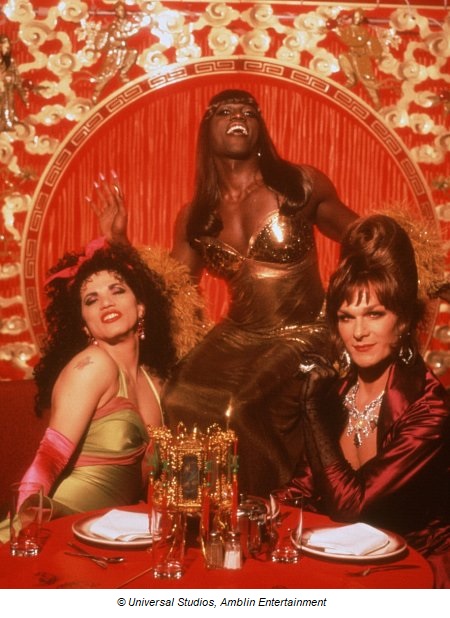
Release poster for To Wong Foo, Thanks for Everything! Julie Newmar, © Universal Studios, Amblin Entertainment 1995
With the New England summer breeze tousling her unit, Noxeema says to Chi-Chi:
NOXEEMA: “When a straight man puts on a dress and gets his sexual kicks, he is a transvestite. When a man is a woman trapped in a man’s body and has a little operation, he is a transsexual.”
CHI-CHI: “I know that.”
NOXEEMA: “And when a gay man has way too much fashion sense for one gender, he is a drag queen.”
VIDA: “Thank you.”
NOXEEMA: “And when a tired little Latin boy puts on a dress, he is simply a boy in a dress!”
Under which category Hilton Als understood Alison is unclear. “Her ‘sexiness’ and coyness and all of that seem fairly conventional to me,” he wrote, “based perhaps on gentlemen’s magazines. But there were not that many other references for her to go by, and, after all, April was born a man.”
No one is born a man. April may have been born with male anatomy, but the modern world outside their Oakland apartment called them a man. It is unknown whether that’s who Alison was when they woke up in the morning, made coffee, and smoked the day’s first cigarette. If their identity was analogous to transgender, the publication of Alison’s birth name complicates matters. In trans communities, people call the betrayal of one’s birth name deadnaming (Hotchkiss also shared Alison’s given name). If Als made a mistake, this was it, possibly revealing a writer out of his depth. Indeed, he leaves Alison’s world almost as soon as he enters it, having tried and failed to pin down smoke.

April Dawn Alison, Untitled, n.d.; collection SFMoMA, gift of Andrew Masullo.
Are we supposed to identify with his frustration? “Did he have certain needs,” Als wondered of Alison’s body, “such as loving a woman like April and cherishing her while having her live forever in an image? Your guess is as good as mine.”
The exhibition of April Dawn Alison at SFMoMA constituted a late outing. The collection was likely never meant for the public eye, and yet one glimpse led to another, and before long, Alison’s secret was out. If we cannot know Alison’s identity in their terms, is Als guilty of anything? Erin O’Toole, the Associate Curator of Photography for the Baker Street Foundation, was responsible for presenting April Dawn Alison at the San Francisco Museum of Modern Art. In Sarah Hotchkiss’ words, “O’Toole opts for ‘she,’ writing ‘the Polaroids are of April Dawn, by April Dawn.’” Whether Alison the photographer was synonymous with the Alison pictured is a moot argument. The photographic subject produces the artist, who in turn mediates the subject, which reinforms the artist and so on. “Art” resides in the relationship between piece and individual, and that’s why it’s always up for interpretation.
There, I just saved you a semester at CCA.
What April Dawn Alison teaches us about identity
Whether Alison’s life on the fringes of society was a deliberate choice is debatable. The weapons of queer pain are silence and exile. Queer people can wield those tools to obliterate shame and mine joy from their suffering. “I cannot know if April would have wanted these photographs to be discovered and displayed,” said O’Toole, “or which name or pronoun the artist would have used in a context such as this one.” Which one? A museum, American society, the past, our present, the nefarious future? Gender is but one reaction to the panic of existence. These are portraits of authenticity, a struggle of love and hardship all at once.
To be queer is to assume an ever-changing posture to an ever-changing world. Queer pain is being denied either. Think of Alison’s many Polaroids (9,200 to be exact) as a generous record of those constantly shifting sands. I went to SFMoMA and walked the full length of this exhibit. Towards the end of a wall in a paragraph, Erin O’Toole concedes:
“Language often fails to describe the complexity and fluidity of gender, and I understand that showing these pictures raises many questions about identity, privacy, and intent.”
While I agree with O’Toole about the limitations of language surrounding identity, I believe it can capture privacy and intent. Hotchkiss, Als, O’Toole, myself—we each identified Alison based on someone else’s account of who they were. Did the consequent opinions we formed bring us closer to the truth? The person we meet in April Dawn Alison is not trying to claim an identity. Rather these images say more about how identity tries to claim us. Their world reflects our own, and that’s as true as true can be.

April Dawn Alison, Untitled, n.d.; collection SFMoMA, gift of Andrew Masullo.
One last photo. Alison stands on bare concrete, doubled over in profile. They wear a pleated grey skirt and red sweater with matching patent leather pumps. Their torso is mostly out of frame, the camera trained on the metal cuffs and chains binding their arms and legs. Alison’s hands, barely free to function, caress their left calf in pantyhose. Their facial expression sweats with coquettish distress. Alison’s eyes barely make it into the corner of the frame, so lucky a shot that it almost looks planned, and it was, in every picture. Some interpret the chains as a commentary on gender’s possessiveness, but why stop there? Alison doesn’t; they take command of it. They exhaust it, running conformity into the ground to pose among the wreckage.


